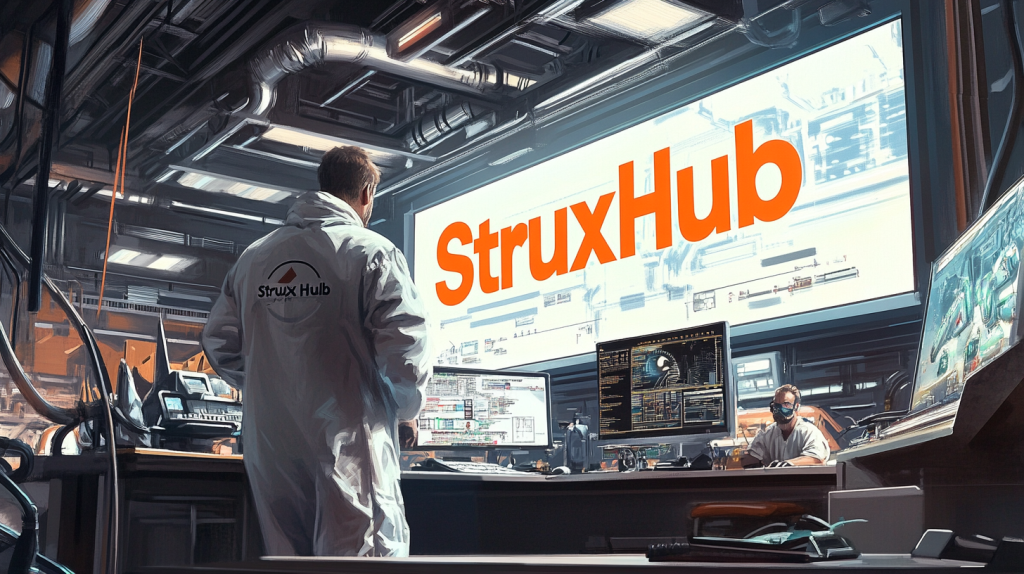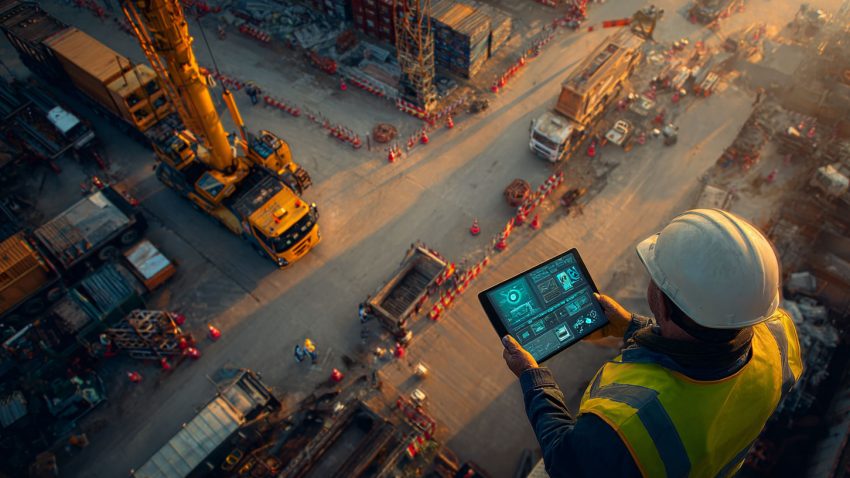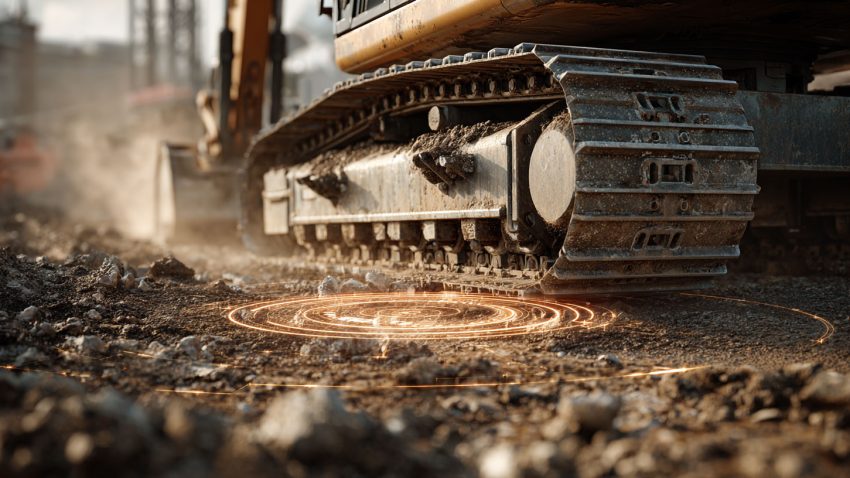How AI Tools Are Automating Daily Construction Reports for Superintendents
Table of Contents:

Why Daily Construction Reports Are Getting a Smart Makeover with AI
Daily construction reports used to mean hours of handwritten notes, photo uploads, and chasing down team updates after a long day in the field. For superintendents balancing dozens of moving parts on the jobsite, this manual process was frustrating and often led to delays in documentation or missed details. AI is now stepping in to automate and simplify this critical part of the workflow, turning reporting from a time sink into a smart, effortless routine.
Instead of typing out logs or sorting through scattered files, AI-powered tools can pull in data from field sensors, photos, weather feeds, and voice input. These tools auto-generate summaries of what happened that day, who was on site, what materials were used, and whether key tasks were completed. For superintendents, this means more time focusing on the build and less time stuck behind a screen after hours.
By automating daily construction reports, AI improves both the quality and consistency of documentation. Teams get better insights faster, office staff can review progress in real time, and compliance tracking becomes easier. The shift toward automation is not about replacing the human element. It’s about making sure superintendents have the support they need to run smoother, smarter jobsites every day.
Top Features
- Auto-generated summaries based on jobsite activity and team input
- Voice-to-text support for hands-free field reporting
- Integrated photo tagging and organization
- Real-time syncing with project dashboards and timelines
Top Benefits
- Saves superintendents hours of manual documentation each week
- Ensures accurate reporting even when the schedule gets hectic
- Improves field-to-office communication with consistent updates
- Supports compliance by maintaining a clear daily activity log
Best Practices
- Use AI tools that pull data from existing jobsite platforms
- Encourage voice input or quick field notes instead of manual typing
- Set daily reminders to review and approve AI-generated logs
- Sync reporting tools with your schedule and crew assignments
AI turns the daily report from a chore into a streamlined, built-in part of the workflow. For busy superintendents, it’s the digital assistant they didn’t know they needed.
What Features Should Superintendents Look for in AI-Powered Reporting Tools?
Not all AI tools are created equal. When it comes to automating daily construction reports, superintendents should prioritize features that reduce friction, adapt to their daily flow, and provide real value from day one. The best tools work quietly in the background, collecting and organizing data without interrupting the pace of work.
Voice capture is a game changer. Being able to speak into your phone or tablet while walking the site and have that input turned into a clear, formatted log is a huge time saver. Equally important are tools that can tag and organize photos automatically, making it easy to find visual documentation when needed. Some platforms even track who was on site, what equipment was used, and link all of it to the day’s timeline.
Superintendents also benefit from AI that learns over time. If the system can recognize repeat tasks or adjust to your preferred language and structure, the reports feel more human and less templated. Integration is another must-have. A reporting tool should sync with your scheduling platform, crew lists, and document management system without requiring duplicate entry or extra admin time.
Top Features
- Voice-to-report automation with editable summaries
- Smart photo capture with location and task tags
- Auto-fill fields based on past entries or project templates
- Seamless integration with project management software
Top Benefits
- Makes reporting feel natural and low effort for field leaders
- Reduces errors and inconsistencies in daily documentation
- Helps office teams access and sort data without delays
- Keeps superintendents focused on fieldwork, not forms
Best Practices
- Choose tools that support voice, photo, and text input
- Look for platforms that learn from your reporting habits
- Integrate reporting with scheduling, crew logs, and material tracking
- Review AI-generated drafts before final submission
The best AI tools for reporting aren’t flashy—they’re functional. When chosen well, they blend into the background while giving superintendents exactly what they need to stay organized and accountable.

How AI Enhances Accuracy and Accountability in Field Reports
Construction thrives on trust, but documentation backs it up. AI brings a new level of accuracy to daily reports by capturing real-time data directly from the jobsite. Instead of relying on memory at the end of a long day, superintendents can document progress as it happens, knowing that AI tools are organizing and formatting the information automatically.
This helps eliminate gaps in reporting. AI doesn’t get distracted or forget to log hours worked. It pulls data from tools already in use—such as access logs, schedule updates, or task checklists—and weaves them into a clear record. These reports are more consistent across teams, reducing miscommunication and improving accountability when something needs to be reviewed or verified later.
AI also helps surface patterns. Over time, it can flag recurring delays, identify which teams are consistently ahead or behind schedule, and support smarter planning for future phases. This level of insight supports everyone from the superintendent to the owner, helping align field activity with project goals.
Top Features
- Real-time data collection from jobsite inputs
- Automated time tracking and crew activity logging
- Consistent formatting for daily reports across teams
- Data storage with quick retrieval for audits or client reviews
Top Benefits
- Improves accuracy by removing guesswork from documentation
- Strengthens accountability with objective data
- Reduces disputes or rework caused by unclear reporting
- Supports quality control and progress verification
Best Practices
- Capture jobsite updates throughout the day, not just at close
- Set rules for report completeness to ensure accuracy
- Use AI tools to review trends or recurring issues weekly
- Share daily reports with stakeholders to maintain transparency
By improving the reliability of daily reports, AI helps superintendents protect their crews, their schedules, and their reputations—all while making the process easier than ever.
Related Articles:
Best Guide to Construction Management Software
The Best Guide to Delivery Management Systems (DMS) for Commercial Construction
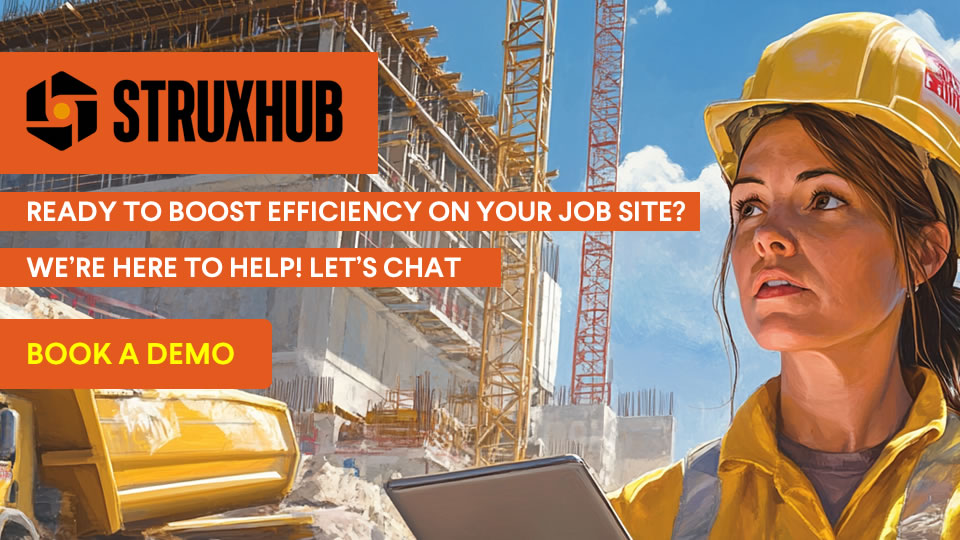
How AI Saves Time and Reduces Manual Entry for Busy Superintendents
For superintendents managing multiple crews and daily updates, paperwork can feel like a second full-time job. AI is changing that by eliminating redundant tasks and giving field leaders a faster, more reliable way to complete reports. Instead of starting from scratch each day, superintendents can use AI tools that generate a draft based on what happened onsite—automatically pulling in photos, schedule changes, weather conditions, and crew activity.
What used to take an hour or more at the end of the day can now be completed in minutes. And because the report is based on real-time data, it’s more accurate than relying on memory or jotting notes between calls. AI also helps reduce repetitive typing. It can auto-fill job names, task descriptions, material quantities, and other common inputs, freeing up valuable time.
More importantly, this efficiency doesn’t come at the cost of quality. Reports are still comprehensive, readable, and easy to share with office staff, inspectors, or clients. Superintendents get more time back in their day while still staying on top of critical documentation—a win for both productivity and peace of mind.
Top Features
- Auto-fill fields for job names, tasks, materials, and weather
- Draft generation from real-time jobsite activity and photos
- Shortcut templates that adapt to each superintendent’s style
- Smart reminders to submit reports before end-of-day
Top Benefits
- Saves 30–60 minutes daily on report writing
- Reduces mental load and end-of-day rush
- Increases consistency in documentation across projects
- Minimizes errors caused by last-minute data entry
Best Practices
- Set up recurring templates for common task types
- Capture data throughout the day instead of waiting until close
- Use AI reminders to prevent missed submissions
- Let office staff review AI drafts for added quality control
Time is the one thing superintendents never have enough of. AI-powered reporting tools give some of it back, helping field leaders work smarter without compromising project quality or compliance.
Related Articles:
Best Guide to AI in Construction Project Management: How Smart Tools Are Improving Construction Site Productivity; AI
Best Guide to Geographic Information Systems (GIS) in Construction: How Location-Based Data Improves Construction Project Management
Best Guide to Smart Helmets in Construction: Enhancing Safety, Communication, and Site Efficiency
Best Construction Scheduling Software for General Contractors and Superintendents
Best Guide to Solar Farm Construction Management: Top Solar Construction Management Software for Tracking Projects, Deliveries, and Compliance
What AI Means for Documenting Weather, Photos, and Onsite Conditions
Weather delays, visual inspections, and environmental factors often play a huge role in jobsite progress. AI is now making it easier to document and track these variables in real time. Rather than manually typing out weather notes or labeling dozens of photos, AI tools automatically collect and organize this information—creating a more complete, searchable record for each day of the project.
For example, AI can pull weather data from local sources and match it to your project location and schedule. It can also analyze jobsite photos for lighting, moisture, or safety concerns, tagging them by area or activity. Some tools even use sensors or IoT data to detect noise levels, dust, or temperature variations, adding even more context to the day’s report.
This level of detail is especially useful when reviewing claims, verifying work completed, or explaining delays. Whether it’s for internal tracking or external transparency, superintendents can rely on AI to keep a complete visual and environmental history of the jobsite without adding extra work to their plate.
Top Features
- Automatic weather logging by time and location
- Smart photo tagging by task, area, or safety indicator
- Environmental data input from sensors or mobile devices
- Side-by-side comparisons of progress across days
Top Benefits
- Creates a reliable digital record of jobsite conditions
- Reduces the risk of disputes over weather delays
- Enhances documentation with photo evidence and location tags
- Speeds up reviews for inspections, punch lists, or quality checks
Best Practices
- Take photos throughout the day for AI tools to process and tag
- Match weather records to work delays or material delivery issues
- Use AI to generate visuals for owner updates or team huddles
- Store weather and photo logs in your daily report folder
By documenting every element of the jobsite automatically, AI helps superintendents keep a clearer trail of what happened and why—without sacrificing time on the actual build.
How StruxHub Supports AI-Driven Daily Reporting for Field Teams
StruxHub isn’t an AI platform—but it’s built to work alongside AI tools, making it easier for superintendents to organize, share, and act on their daily construction reports. Whether your team is using voice-to-text tools, smart photo trackers, or real-time weather logs, StruxHub serves as the central hub where all that information comes together.
Our platform allows field teams to create and submit daily logs quickly, with task-based organization, document attachments, and crew notes all stored in one place. If you’re using AI-generated drafts, StruxHub lets you upload, edit, and finalize them without jumping between apps. It’s designed to eliminate the friction between fieldwork and reporting so that superintendents can keep things moving without missing a beat.
We also help ensure consistency and compliance by making every report easy to access for office staff, project managers, and clients. With built-in folders, searchable logs, and real-time syncing, your AI insights don’t get lost in email or forgotten in shared drives—they live where your entire team can use them.
If your goal is faster, smarter reporting with less hassle, StruxHub provides the foundation to support AI and amplify its value—no tech headache required.
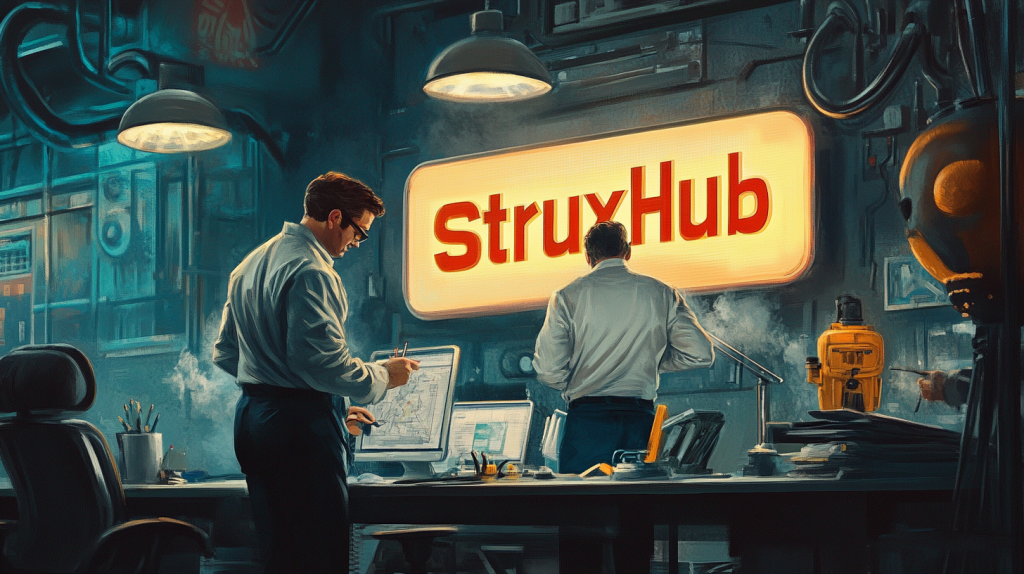
StruxHub
Experience the power of StruxHub today and witness firsthand how it can revolutionize your construction operations.
FAQ
How does AI simplify daily construction reporting for superintendents?
AI simplifies daily construction reporting by turning a time-consuming, manual process into something faster, more accurate, and more consistent. Instead of typing out long logs or digging through photos and notes at the end of the day, AI tools can auto-generate a draft report based on real-time field activity.
Many platforms allow superintendents to speak into a phone or tablet, and AI converts that voice input into a readable log. It can pull in data like weather, crew hours, materials used, and even tagged jobsite photos. This means that the report is not just easier to create—it’s also more complete and based on real, objective inputs gathered throughout the day.
The biggest win for superintendents is time. What used to take an hour or more now takes just a few minutes, freeing up evenings or allowing more attention to be focused on active jobsite needs. AI also helps prevent skipped days or inconsistent formats. With built-in reminders, auto-fill fields, and templates that learn from previous logs, superintendents can maintain reporting standards without added stress.
Even better, these AI-generated reports can be reviewed by office staff immediately, which improves communication and helps spot issues sooner. Whether you’re tracking progress, managing subs, or verifying completed work, AI brings speed and clarity to one of the most essential parts of construction management.
What’s the difference between AI-generated reports and traditional logs?
Traditional daily construction logs rely on manual entry. A superintendent typically writes or types a summary of the day’s activity, crew performance, materials, inspections, and weather at the end of the shift. This process often depends on memory or scattered notes, and it varies in detail and structure from day to day or person to person.
AI-generated reports are built using real-time data. These tools collect inputs automatically throughout the day, including voice notes, sensor data, field photos, crew check-ins, and schedule updates. Rather than relying solely on human recall, AI connects the dots between data streams and produces a clean, formatted draft report.
One of the key advantages of AI-generated logs is consistency. The format is the same every day, and essential fields are never skipped. AI can also detect trends over time, offering insights that traditional logs can’t provide—like identifying recurring delays, weather-related impacts, or which subcontractor consistently misses deadlines.
AI also reduces the burden on field teams. Instead of sitting down at the end of a long day to write a report, superintendents can simply confirm or adjust a draft that’s already 90 percent done. This not only saves time but helps ensure that reporting becomes a reliable daily habit rather than an afterthought.
Can AI-generated daily reports be trusted for compliance and legal review?
Yes, AI-generated daily reports are increasingly being used for compliance documentation and legal support because they offer structured, time-stamped, and data-backed records. These reports are often more reliable than handwritten or manually typed logs because they’re built using real-time inputs and standardized formats that reduce human error.
AI tools can log who was on site, what materials were used, what equipment was operating, and even flag whether required safety measures were followed. Some tools automatically pull in photos, weather records, and inspection data, all of which help create a comprehensive record of jobsite activity.
When a dispute arises, a well-maintained AI-driven report offers strong documentation that can be referenced quickly. Since the data is time stamped and linked to other verified sources (like GPS or scheduling systems), it helps build a strong case during audits, insurance claims, or regulatory reviews.
Of course, human review is still important. Most AI tools provide a draft that the superintendent can review, edit, and approve. This ensures the record stays accurate and reflects any job-specific nuances. But the AI does the heavy lifting—ensuring nothing gets missed and reports are submitted on time.
In short, AI adds both speed and trust to your documentation. When used alongside a platform like StruxHub, these reports become part of a well-organized system that supports long-term compliance and accountability.
Do I need special equipment or training to use AI reporting tools?
No, most modern AI reporting tools are designed to work on devices you already use—like smartphones, tablets, or laptops—and require little to no technical training. These tools are built to be simple, intuitive, and mobile-first, especially for superintendents and field crews who are constantly on the move.
Voice-to-text reporting, for example, works like using a notes app or sending a voice message. AI photo tools use your phone’s camera but apply tagging and organization automatically. Most platforms offer clean interfaces with checklists, drop-downs, and buttons that follow the same logic as any other construction software.
That said, there are a few tips to ensure a smooth rollout. First, it helps to do a short team training session to get everyone on the same page. Many vendors offer quick onboarding videos or mobile demos. Second, make sure the tools you choose integrate with your current platforms—this prevents duplication and makes adoption easier.
You don’t need sensors, drones, or fancy field hardware to get started. You just need a solid platform that uses AI to enhance tasks you’re already doing. In many cases, superintendents are surprised by how easy it is to get into the rhythm once the setup is complete.
How does StruxHub support teams using AI for daily reports?
StruxHub is built to work alongside AI tools by acting as the central hub where reports, field updates, and documents are stored, shared, and acted on. Whether your team uses AI for voice transcription, photo tracking, or weather documentation, StruxHub gives you a place to review and organize those reports without juggling disconnected apps or spreadsheets.
Superintendents can easily upload or generate daily logs using smart templates, attach photos or field notes, and route documents to the right stakeholders—all from a single dashboard. If you use AI to draft reports, StruxHub gives you the tools to polish, approve, and send them without reformatting or re-entering data.
We also support real-time collaboration. Office teams can review reports the moment they’re submitted, respond with comments, or flag missing items. This tight loop between field and office helps make sure your reports aren’t just completed—they’re useful, searchable, and always on hand when needed.
In short, StruxHub doesn’t replace your AI tools—it strengthens them. By keeping everything connected, clean, and easy to access, we help you make the most of AI-powered reporting across every project.

